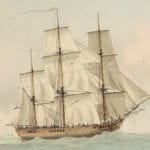 Technology
Technology  Technology
Technology  Humans
Humans 10 Everyday Human Behaviors That Are Actually Survival Instincts
 Animals
Animals 10 Animals That Humiliated and Harmed Historical Leaders
 History
History 10 Most Influential Protests in Modern History
 Creepy
Creepy 10 More Representations of Death from Myth, Legend, and Folktale
 Technology
Technology 10 Scientific Breakthroughs of 2025 That’ll Change Everything
 Our World
Our World 10 Ways Icelandic Culture Makes Other Countries Look Boring
 Misconceptions
Misconceptions 10 Common Misconceptions About the Victorian Era
 Mysteries
Mysteries 10 Strange Unexplained Mysteries of 2025
 Miscellaneous
Miscellaneous 10 of History’s Most Bell-Ringing Finishing Moves
 Technology
Technology Top 10 Everyday Tech Buzzwords That Hide a Darker Past
 Humans
Humans 10 Everyday Human Behaviors That Are Actually Survival Instincts
 Animals
Animals 10 Animals That Humiliated and Harmed Historical Leaders
Who's Behind Listverse?

Jamie Frater
Head Editor
Jamie founded Listverse due to an insatiable desire to share fascinating, obscure, and bizarre facts. He has been a guest speaker on numerous national radio and television stations and is a five time published author.
More About Us History
History 10 Most Influential Protests in Modern History
 Creepy
Creepy 10 More Representations of Death from Myth, Legend, and Folktale
 Technology
Technology 10 Scientific Breakthroughs of 2025 That’ll Change Everything
 Our World
Our World 10 Ways Icelandic Culture Makes Other Countries Look Boring
 Misconceptions
Misconceptions 10 Common Misconceptions About the Victorian Era
 Mysteries
Mysteries 10 Strange Unexplained Mysteries of 2025
 Miscellaneous
Miscellaneous 10 of History’s Most Bell-Ringing Finishing Moves
10 Suspected Cases Of Explorers Who Were Eaten By Cannibals
Part of the great thrill of exploration is the unknown. Risk and reward must be considered on every exploratory trip. Ships might sink, disease might run rampant, and sand may be quick, but new knowledge can be gained and places in the history books secured.
For the following explorers, however, the risk caught up with them in a big way. Not only did they die, but they’re also believed to have been eaten by cannibals. For some, whether or not they were actually cannibalized is up for debate. Others were eaten without a doubt.
10 German Explorer Killed On Polynesian Goat Hunt

German-born Stefan Ramin and his girlfriend Heike Dorsch were experienced travelers. They had embarked on a sailing trip around the world, which, on August 30, 2011, took them to the Marquesas Islands of French Polynesia. They fell in love with the place, staying there for twice as long as they’d initially planned. During that time, Stefan arranged for a local named Arihano Haiti to take him on a traditional goat hunt.
The two men left Dorsch alone for several hours. When she saw their dinghy return, only Haiti was present. He told her that there had been an accident in the forest. Ramin had been badly hurt, and they needed to rush back to him. When they got there, Haiti pointed a shotgun at Dorsch’s face and told her, “You die now.”
As the two wrestled, Haiti changed tacks—instead sexually assaulting Dorsch.[1] She was then tied to a tree, where she struggled for several hours to get free.
Haiti was on his way back when Dorsch finally escaped her bonds. She saw his flashlight in the distance, deciding in that moment to sprint to the shoreline. Clambering onto a fellow traveler’s boat, Dorsch knew she had survived.
When police searched the area, they found Stefan Ramin’s remains in the ashes of a campfire. Haiti had killed him. However, the story sensationally grew in the international press because of the possibility of cannibalism. Many French Polynesians took offense to the direction of coverage, seeing it as a perpetuation of negative and outdated stereotypes.
9 The Blanche Bay Massacre

In 1878, Methodist reverend George Brown sent four Fijian missionaries to Papua New Guinea. Like any missionary trip, it was a delicate balance between successful conversion and causing extreme insult. On this trip, members of the Tolai tribe seem to have been unimpressed by the missionaries’ sales pitch.
They ended up killing and eating all four of them at the behest of a tribal leader named Taleli.[2] George Brown, seemingly forgetting the basic tenets of Christian philosophy, launched a retaliatory attack on the islanders. He burned down an entire village that was believed to have links with the murders and killed at least ten people. Ultimately, British colonial authorities exonerated Brown of any wrongdoing.
“The natives respect us more than they did, and as they all acknowledge the justice of our cause they bear us no ill will,” said Brown. In contrast, a newspaper column at the time said, “If missionary enterprise in such an island as this leads to wars of vengeance, which may readily develop into wars of extermination, the question may be raised whether it may not be better to withdraw the mission from savages who show so little appreciation of its benefits.”
In 2007, the Tolai tribe, who no longer practice cannibalism, offered a formal apology for the killings.
8 Andrei Kurochkin’s Siberian Fishing Trip
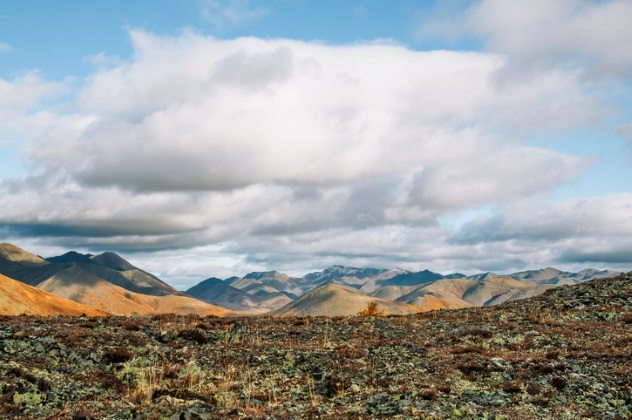
In 2012, Andrei Kurockhin and three of his friends explored the Siberian taiga on a fishing trip. When their jeep and all their supplies sank into a river, things got pretty dark. The trip was supposed to last a few weeks. Instead, the men were out in the elements for around four months. Kurochkin died in that time. Another unnamed man has never been found.
The two survivors were Alexei Gorulenko and Aleksandr Abdullaev. After they were found, the remains of Kurochkin turned up. It was clear that he had been butchered. At this point, Gorulenko changed his story. He claimed that a leg injury had caused Kurochkin to die. Only then did they decide to eat him, as a means of self-preservation. The duo carried Kurochkin’s body with them as they trekked to safety, slowly hacking off chunks of flesh.[3] Abdullaev was never charged with a crime. And although Gorulenko was put on trial for murder, he initially escaped prison.
Kurochkin’s widow reacted angrily, saying, “Can you imagine what I have left? One foot with toes, one finger, and the back of his skull with some hair. This is it. This is all I have left from the man I loved.” The Russian Supreme Court subsequently decided to overturn the lower court’s decision, sentencing Gorulenko to 12 years in prison.
7 Giovanni Da Verrazzano’s Final Voyage To The New World

Giovanni da Verrazzano was an Italian explorer who was active in the early 1500s. After exploring Northern Africa, he became known to King Francis I of France, who commissioned him on adventures into the New World.
Like many of his contemporaries, he was obsessed with finding a clear path to the Pacific Ocean and into Asia in order to establish valuable trade routes. Over the course of his first two expeditions, Verrazzano had explored Maine, Nova Scotia, and Newfoundland. On his third expedition, he ended up in Brazil, returning to France with a ship full of exotic lumber.
In 1528, Verrazzano made his final sea trip, once again in the direction of the Americas and once again seeking out that elusive trade route. This time, the Italian explorer hit Florida before sailing south into the Caribbean.
It’s believed that somewhere near Guadeloupe, Verrazzano saw an island that he decided to take a rowboat out to.[4] The crew on the main ship, observing from a considerable distance, were powerless to help as their expedition leader was killed and eaten by the island’s residents.
Admittedly, accounts of Verrazzano’s life are a little spotty. Some historians believe the cannibal thing to be apocryphal, favoring an equally fantastical theory that Verrazzano was actually a French pirate named Jean Florentine, who was captured and hanged by the Spanish.
6 Thomas Baker And Seven Of His Followers Are Eaten By The Villagers Of Nabutautau

Fiji is a country that has historically been avoided by European travelers. It was known in forewarning shorthand as “the Cannibal Isles.” Methodist reverend Thomas Baker moved there in 1859.[5] He survived until July 1867, when he ventured deep into the country’s main island, Viti Levu, and attempted to convert a local chief.
The legend goes that Baker presented the chief with a comb as an icebreaking gift. As the two talked, the Christian gospel made no impression on the chief. When he flatly refused to convert to Christianity, Baker took his comb back. In the process of Baker’s petulant comb-snatching, the chief’s head was touched, which was interpreted as an insulting and threatening act.
It’s unknown if that really happened. The reality may be that tensions simply reached a boiling point due to a distrust and resentment toward sanctimonious outsiders. Nevertheless, Baker was killed, along with seven of his followers. They were then eaten by the village people of Nabutautau.
The villagers believed their actions resulted in a curse, which culminated in a 2003 visit to Nabutautau by 11 of Baker’s descendants. A formal apology was given, and a curse-lifting ritual took place.
5 Richard Parker Is Killed And Eaten Out Of ‘Necessity’

In 1884, four men set sail from Southampton, England, in a yacht. Their intent was to deliver the vessel to its new owner in Australia. Two months into their voyage, the yacht was sunk by a rogue wave.[6]
The crew managed to escape on an emergency dinghy but were stranded in the South Atlantic with only two tins of turnips to eat. These were rationed out over a 12-day period. According to the other three sailors, the 17-year-old cabin boy, Richard Parker, drank sea water after the supplies had run out. This caused his health to deteriorate rapidly.
Thomas Dudley was the yacht’s captain. Three weeks into the ordeal, he said to crew member Edwin Stephens, “The boy is dying. You have a wife and five children, and I have a wife and three children. Human flesh has been eaten before.”
Soon after, Stephens had Parker pinned down as Dudley jabbed at his throat with a penknife. The three remaining crew members satiated their own thirst with the boy’s blood and then feasted on his liver and heart. Adequately stuffed, the men carved off chunks of Parker’s flesh and set them aside for future consumption. Whatever remained of him was tossed overboard.
When the men were eventually rescued, Dudley made no attempt to cover up what he’d done. He believed he’d acted out of necessity and within unwritten maritime convention. Most of England agreed. Parker’s older brother, who was a sailor himself, even shook Dudley’s and Stephens’s hands during their trial.
However, they were found guilty of murder and were sentenced to death. A few days later, the home secretary reduced their sentence to six months’ imprisonment. The other sailor, who took part in the cannibalism but not the murder, was not charged with any crime.
4 Oliver Fellows Tomkins And James Chalmers Keep Promise To Visit Cannibal Islanders
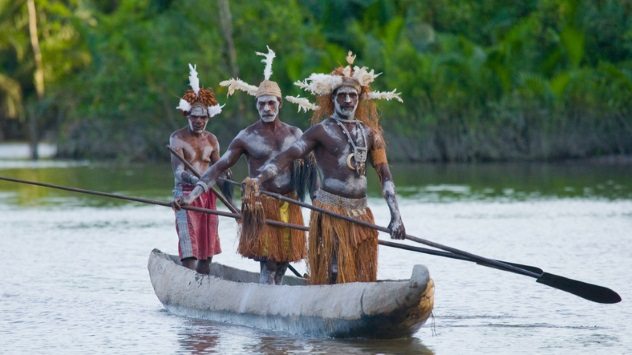
Oliver Fellows Tomkins and James Chalmers were Congregationalist missionaries stationed in Papua New Guinea. Chalmers had lived there for 23 years. Tomkins spent just over a year there.
It was in 1901 when both Chalmers and Tomkins met their demise. They were spreading the Christian gospel to the residents of Goaribari Island. Their journey took them along the Aird River. Tomkins kept a record:
In the afternoon we were having a short service with the crew, when about twenty canoes were seen approaching. [ . . . ] They stayed on board for about three hours, examining everything, from the ship’s rigging to our shirt buttons. They tried hard to persuade us to come ashore in their canoes, but we preferred to spend the night afloat, and promised we would visit their village in the morning.[7]
Chalmers, Tomkins, and several crew members kept their word and went ashore the next day. They were killed and eaten, and their bones were kept on display.
3 Owen Coffin And His Crewmates Eat Each Other After Whale Attack
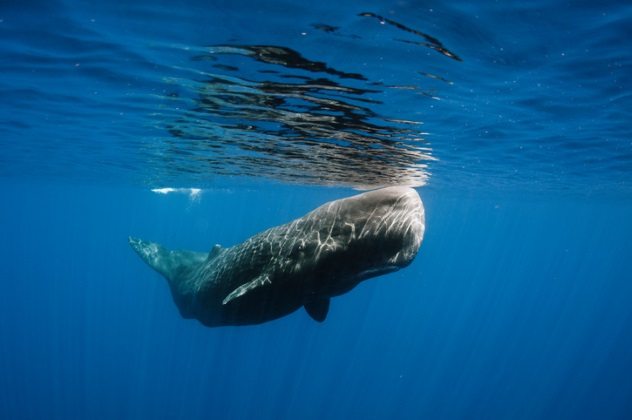
The ominously named Owen Coffin was 17 years old at the time of his death. He was a sailor aboard a ship called the Essex, which had ventured into the Pacific Ocean on a sperm whale hunt.
In November 1820, the Essex was sunk by a gargantuan whale, which struck it twice. Crew member Owen Chase described the second debilitating blow:
I turned around and saw him [ . . . ] coming down with twice his ordinary speed, and it appeared with tenfold fury and vengeance in his aspect. The surf flew in all directions about him with the continual violent thrashing of his tail. His head about half out of the water, and in that way he came upon us, and again struck the ship.
The crew managed to escape on three emergency boats. As the men died off one by one, their bodies were kept to be rationed out as food. More than two months into their ordeal, the crew on Coffin’s boat decided to draw lots to determine who would be killed so that the others could eat. Coffin lost. When his cousin, the Essex ’s captain, offered to take his place, Coffin is believed to have said, “No, I like my lot as well as any other.”
Their boat was finally spotted on the South American coast on February 23, 1822, having spent 92 days drifting across the ocean.[8] Herman Melville cited the Essex ’s sinking as one of his primary inspirations for Moby Dick.
2 John Williams’s Poorly Timed Visit To Erromango
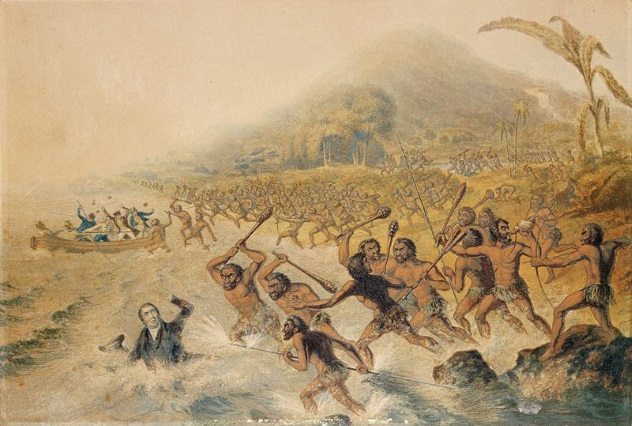
John Williams was . . . yeah, another missionary. He spent over 20 years spreading Christian vibes around the South Pacific. He was a pioneer, famed as one of the most successful missionaries of his time. However, risk was always part of his work package. That caught up to him in 1839, while exploring Vanuatu, then referred to as the New Hebrides.
Williams, along with fellow missionary James Harris, visited the country’s fourth-largest island, Erromango. It was a poorly timed outing. European sandalwood traders had been there just days before and had slaughtered some of the locals.[9] As a result, Williams and Harris were seen as a threat.
Harris was clubbed to death. Williams managed to run toward the sea, before he, too, was clubbed and shot with arrows. The missionaries were then eaten.
In 2009, Williams’s descendants traveled to the site of his murder. Similarly to the tribe that killed Thomas Baker, the people of Erromango believed they had to reconcile with the deceased’s family in order to lift a curse.
1 The Lost Franklin Expedition
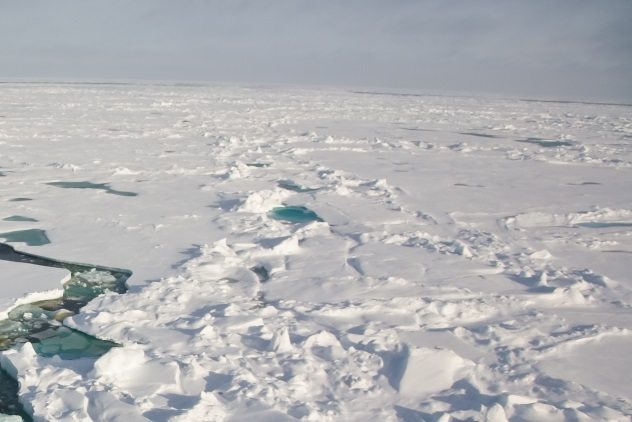
In 1845, Sir John Franklin set off on an expedition that consisted of the HMS Erebus and the appropriately named HMS Terror. The purpose of his adventure was to sail through the last remaining unnavigated section of the Northwest Passage in the Arctic.
Initially, the crew consisted of 134 men, including Franklin. That was reduced to 129 at the ship’s final sighted pit stop in Greenland, where five men were discharged. Franklin ran tight ships, where both swearing and drunkenness were banned. It’s unknown how long this rule lasted. Depending on his level on intrinsic Englishness, it could have ended soon after the ship became trapped in ice in the Canadian Arctic Archipelago.
The ships’ disappearances became a big story back in England. Many expeditions were sent out in an attempt to discover what happened and with the flittering hope of rescuing survivors. There were none. All 129 members of the crew had slowly perished.
The 1857 expedition on the steam schooner Fox was the last of many to be funded by Lady Franklin—John Franklin’s wife. The crew of the Fox found some letters on their search. One, dated May 28, 1847, read, “Sir John Franklin commanding the expedition. All well.” Another, dated April 25, 1848, indicated that Franklin had died two weeks after writing his note.
In 1992, 400 chunks of bone were found on King William Island. Forensic scientists found cut marks on them that were “consistent with defleshing.”[10] In 2014, the HMS Erebus was finally found resting under the sea, 1,900 kilometers (1,200 mi) from Toronto. In 2016, the HMS Terror was also found.
David is a freelance writer and windowlicker. You can read more of his writing @ CultureRoast.com and check out his videos @ YouTube.com/CultureRoast.
Digest some more information on cannibals with 10 Extreme Reports Of Cannibalism Over The Past 200 Years and 10 Horrific Tales of Historic Cannibalism.





